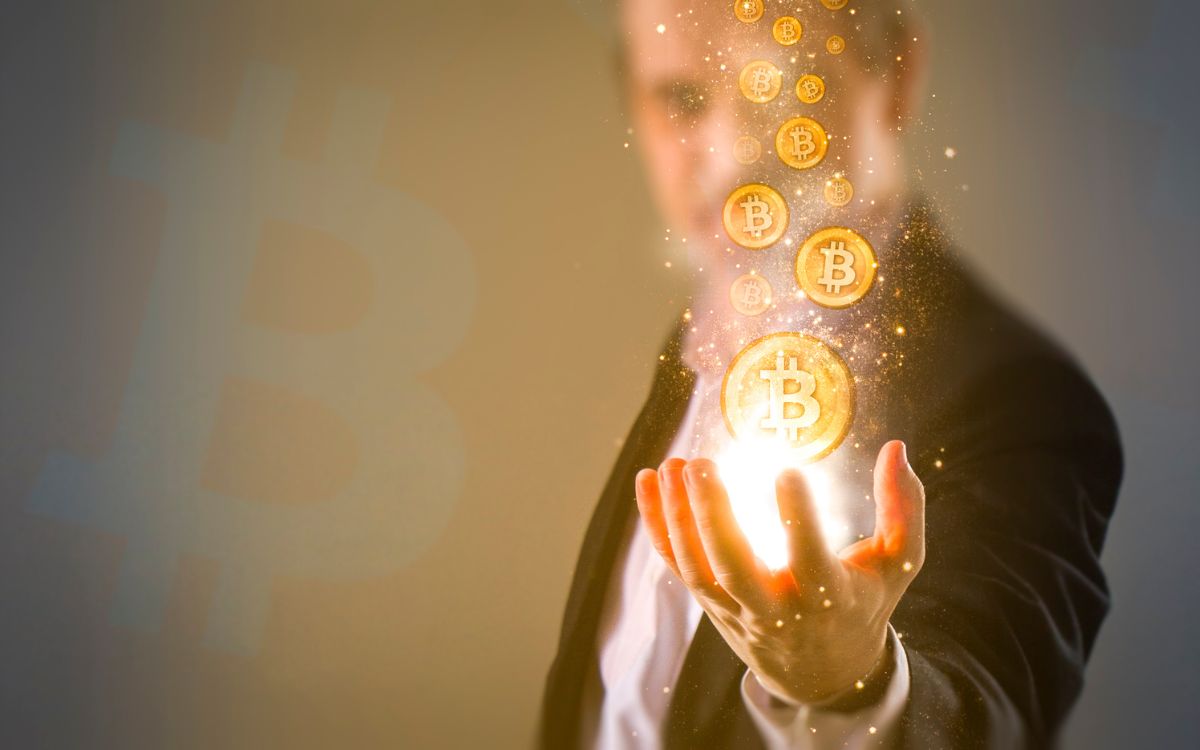Top 10 Advance Tech Ways Can Help To Boost Blockchain Adoption
Blockchain technology has emerged as a transformative force with the potential to revolutionize industries. Despite its promise, widespread adoption faces challenges. In this article, we explore ten technological strategies to propel blockchain adoption into mainstream acceptance.
Top 10 Tech Can Boost Blockchain Adoption

1. Scalability Solutions
Blockchain networks often face scalability issues, leading to slow transaction speeds and high fees. Implementing scalable solutions, such as layer 2 protocols or sharding, enhances the efficiency of blockchain networks, making them more appealing for everyday use.
2. Interoperability Protocols
Interoperability is crucial for the coexistence of multiple blockchains. The development of interoperability protocols allows seamless communication and data exchange between different blockchain networks, fostering a more interconnected and versatile ecosystem.
3. User-Friendly Wallets and Interfaces
Creating intuitive wallets and user interfaces is paramount for user adoption. Streamlining the process of creating wallets, managing private keys, and conducting transactions will make blockchain more accessible to individuals with varying technical expertise.
4. Smart Contract Improvements
Smart contracts are a cornerstone of blockchain functionality. Enhancements in smart contract languages, security features, and flexibility can attract developers and businesses, encouraging them to leverage blockchain for diverse applications beyond simple transactions.
5. Privacy Solutions
Privacy concerns have been a stumbling block for blockchain adoption. Developing robust privacy solutions, such as zero-knowledge proofs and privacy-focused consensus mechanisms, can address these concerns and encourage individuals and enterprises to embrace blockchain technology.
6. Energy-Efficient Consensus Mechanisms
The environmental impact of certain consensus mechanisms, like Proof of Work (PoW), has been a point of contention. Shifting towards energy-efficient alternatives, such as Proof of Stake (PoS) or delegated PoS, can mitigate environmental concerns and make blockchain more sustainable.
7. Tokenization of Assets
Tokenization has the potential to revolutionize traditional financial systems. By representing real-world assets like real estate or stocks as digital tokens on a blockchain, the technology becomes a powerful tool for asset management, trading, and increased liquidity.
8. Integration with Emerging Technologies
Integrating blockchain with other emerging technologies like artificial intelligence (AI) and the Internet of Things (IoT) can create synergies and new possibilities. Smart contracts combined with AI, for example, can automate complex processes, while blockchain in IoT ensures secure and transparent data exchange.
9. Regulatory Compliance Tools
The lack of regulatory clarity has been a hindrance to blockchain adoption. Developing tools that facilitate regulatory compliance, such as identity verification solutions and transparent audit trails, can build trust and encourage businesses to integrate blockchain into their operations.
10. Education and Developer Support
Investing in educational resources and providing robust support for developers is essential. Training programs, workshops, and comprehensive documentation can empower developers to build on blockchain, fostering a vibrant ecosystem of applications and solutions.
Also, read – Top 10 Ways Blockchain Gaming Is Paving The Future For Blockchain Adoption
Ray Chan @ Blockchain Genesis Thailand Episode 1@9gagceo shares thoughts on mass adoption.
"Human beings are obsessed with SIZE" pic.twitter.com/uBNxtoV1Ug
— Passion (@MetaPassionNFT) November 15, 2023
Scalability enables great user experience – the key to mass blockchain adoption. @FantomFDN‘s upcoming “Sonic” update will allow developers to build ultra fast, frictionless dapps. More room for UX-focused innovation.
The user friendly future of crypto is coming.
— Aaron L. (@AaronL3b) November 14, 2023
Conclusion
The widespread adoption of blockchain technology hinges on addressing technical challenges and enhancing user experience. By focusing on scalability, interoperability, privacy, and regulatory compliance, and by embracing emerging technologies, blockchain can become a foundational element of our digital future. The journey toward mass adoption requires collaborative efforts, technological innovation, and a commitment to making blockchain accessible to a broader audience.
FAQs about Blockchain Adoption
What is the adoption of blockchain technology?
Blockchain adoption refers to the integration and use of blockchain technology in various industries and sectors. It involves embracing the decentralized and distributed ledger system to enhance processes, increase transparency, and improve security in a wide range of applications beyond cryptocurrencies.
Who has adopted blockchain technology?
Blockchain technology has been adopted by a diverse range of entities, including:
Financial Institutions: Many banks and financial institutions are exploring or implementing blockchain for faster and more secure cross-border transactions.
Supply Chain Management: Companies in industries like logistics and manufacturing use blockchain to trace the origin and movement of products, ensuring transparency.
Healthcare: Blockchain is adopted for secure and interoperable health data management, enhancing patient care and data integrity.
Governments: Some governments are exploring blockchain for record-keeping, voting systems, and improving transparency in public services.
Is blockchain adoption increasing?
Yes, blockchain adoption is on the rise. As the technology matures and awareness of its benefits grows, more industries and organizations are exploring and implementing blockchain solutions. The increasing adoption is evident in various sectors, including finance, supply chain, healthcare, and more.
Why should we adopt blockchain?
There are several compelling reasons to adopt blockchain:
- Enhanced Security: Blockchain’s decentralized and cryptographic nature provides a high level of security, reducing the risk of fraud and unauthorized access.
- Transparency and Immutability: The transparent and immutable nature of blockchain ensures that once data is recorded, it cannot be altered or tampered with, providing a reliable and auditable record.
- Efficiency and Cost Savings: Blockchain can streamline processes, reduce intermediaries, and minimize paperwork, leading to increased efficiency and cost savings.
- Decentralization: Eliminating the need for a central authority enhances trust among participants and reduces the risk of a single point of failure.
- Smart Contracts: Automation through smart contracts can facilitate and enforce agreements, reducing the need for intermediaries and expediting processes.
Overall, blockchain adoption is driven by the desire for increased efficiency, transparency, and security in various sectors.
Stay informed with daily updates from Blockchain Magazine on Google News. Click here to follow us and mark as favorite: [Blockchain Magazine on Google News].
Get Blockchain Insights In Inbox
Stay ahead of the curve with expert analysis and market updates.
latest from tech
Disclaimer: Any post shared by a third-party agency are sponsored and Blockchain Magazine has no views on any such posts. The views and opinions expressed in this post are those of the clients and do not necessarily reflect the official policy or position of Blockchain Magazine. The information provided in this post is for informational purposes only and should not be considered as financial, investment, or professional advice. Blockchain Magazine does not endorse or promote any specific products, services, or companies mentioned in this posts. Readers are encouraged to conduct their own research and consult with a qualified professional before making any financial decisions. The featured image used is just a creative depiction of the title and it does not intend to hurt sentiments of any person or institution. If it hurts anyone sentiments, please do not hesitate to reach out to Blockchain Magazine.

 Bitcoin
Bitcoin  Ethereum
Ethereum  XRP
XRP  Tether
Tether  Solana
Solana  USDC
USDC  Dogecoin
Dogecoin  Cardano
Cardano  Lido Staked Ether
Lido Staked Ether  TRON
TRON  Wrapped Bitcoin
Wrapped Bitcoin  Chainlink
Chainlink  Wrapped stETH
Wrapped stETH  Avalanche
Avalanche  Sui
Sui  Stellar
Stellar  Hedera
Hedera  Toncoin
Toncoin  Shiba Inu
Shiba Inu  LEO Token
LEO Token  Hyperliquid
Hyperliquid  Litecoin
Litecoin  Bitget Token
Bitget Token  WETH
WETH  USDS
USDS  Polkadot
Polkadot  Bitcoin Cash
Bitcoin Cash  Ethena USDe
Ethena USDe  Wrapped eETH
Wrapped eETH  Uniswap
Uniswap  MANTRA
MANTRA  Ondo
Ondo  Pepe
Pepe  Aave
Aave  Monero
Monero  NEAR Protocol
NEAR Protocol  WhiteBIT Coin
WhiteBIT Coin  Mantle
Mantle  Official Trump
Official Trump  Aptos
Aptos  Dai
Dai  Internet Computer
Internet Computer  Ethereum Classic
Ethereum Classic  Bittensor
Bittensor  Cronos
Cronos  OKB
OKB  POL (ex-MATIC)
POL (ex-MATIC)  Gate
Gate 






